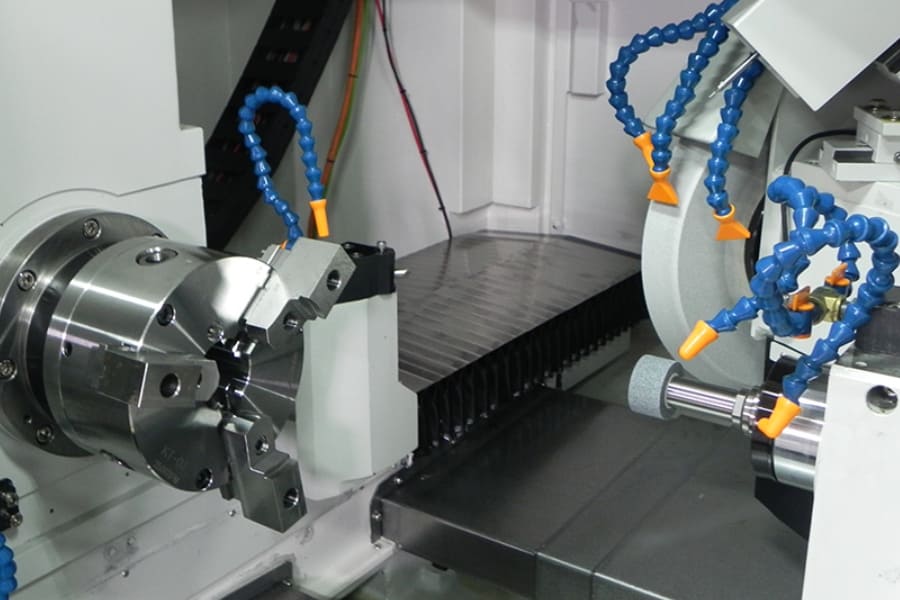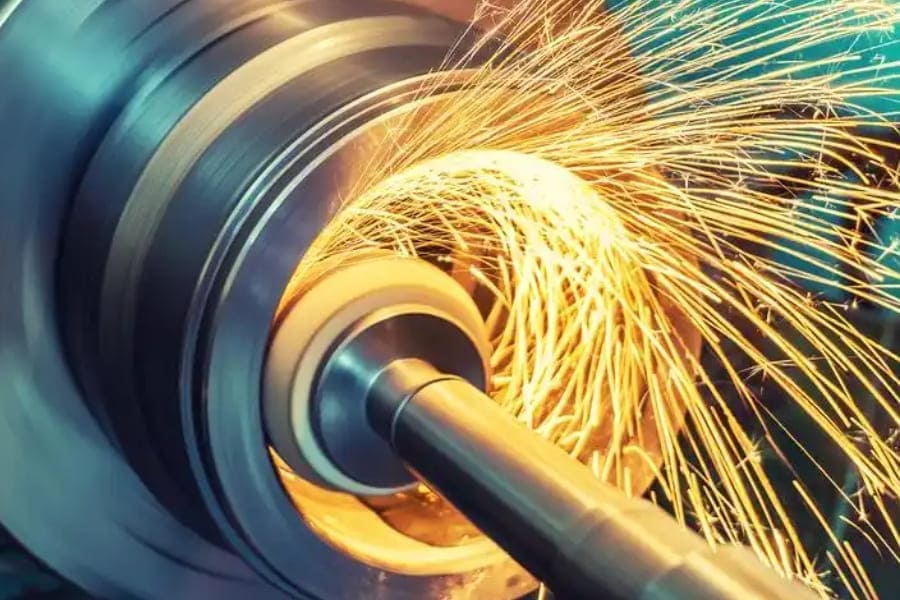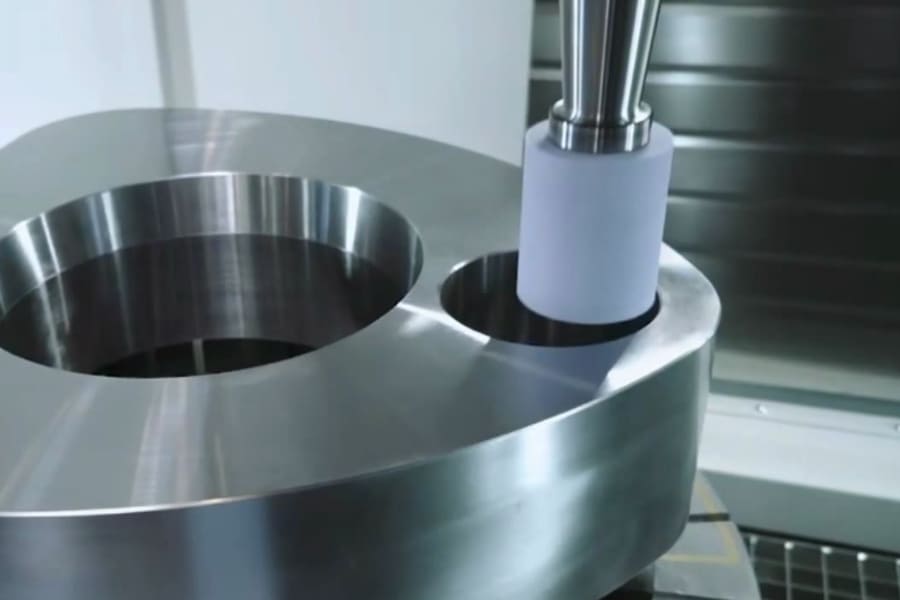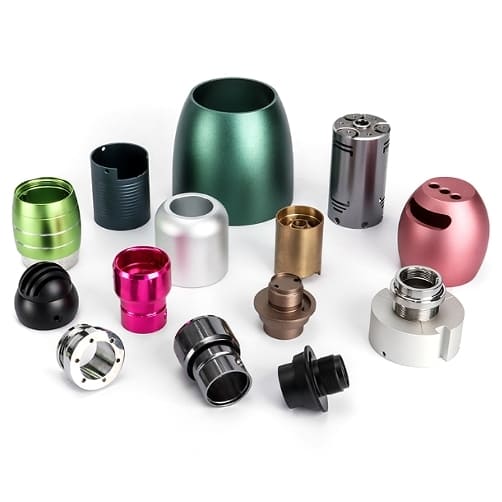What is grinding in a CNC machine?
Grinding is a critical step in the CNC machining1 process, but many are unsure about its exact role. It’s not just about sharpening tools. It’s about improving part precision and finish. In this article, we will break down what grinding is in CNC machining and how it impacts the final product.
Grinding in CNC machining refers to the process of using an abrasive wheel to remove material from a workpiece to achieve precise dimensions and smooth finishes.

As essential as grinding is in CNC machining, it’s often overshadowed by more common processes like turning and milling. But understanding how and when to apply grinding could dramatically impact your project’s success.
What role does grinding play in CNC machining?
You might wonder why grinding is necessary in a machining process that already involves turning and milling. Well, grinding helps achieve extremely tight tolerances and smooth finishes that are crucial for certain industries like aerospace and medical devices.
Grinding in CNC machining improves surface quality and achieves high-precision tolerances by using rotating abrasive wheels to remove small amounts of material from the workpiece.
Grinding is widely used in CNC to create fine finishes and tight tolerances. The process uses an abrasive material—usually a Grinding wheel2 —that rotates at high speeds to remove material from the workpiece in small amounts. This process is essential for many industries, especially when precision and surface finish are critical. Some of the key grinding techniques include surface grinding, cylindrical grinding, and Centerless grinding3.
Surface grinding vs. Cylindrical grinding: What’s the difference?
Surface grinding is typically used to smooth flat surfaces, while cylindrical grinding is applied to parts with cylindrical features, such as shafts and rods. Both types use similar grinding wheels but differ in their setup and the motion of the grinding wheel relative to the workpiece.
| Grinding Type | Application | Motion Type | Common Use Case |
|---|---|---|---|
| Surface Grinding | Smoothing flat surfaces | Grinding wheel moves across surface | Finishing flat, precise surfaces |
| Cylindrical Grinding | Grinding outer diameter or cylindrical surface | Workpiece rotates during grinding | Grinding shafts, rods, and cylindrical parts |
When is grinding necessary in CNC machining?
Grinding is used when a very fine surface finish is required, or when the part requires extremely tight tolerances that other machining methods like milling or turning cannot achieve. For example, many aerospace components require grinding due to the high precision and smooth surface finishes required for critical applications.
- Precision and Surface Quality: Parts with stringent tolerance requirements, such as those in aerospace and medical industries, often need grinding after rough machining steps to ensure a perfect finish.
- Hard Materials: When working with hard or heat-treated metals, grinding may be the only viable method to achieve the desired finish without damaging the material.
How does the CNC machine perform the grinding process?
As CNC machines become more advanced, they offer better control over the grinding process, making it more efficient and effective. So, how do these machines actually perform the grinding operation?
CNC grinding machines use computer-controlled motion to precisely move both the grinding wheel and the workpiece, ensuring the part meets the necessary specifications.

These machines are programmed with detailed specifications, and they control the movement of both the grinding wheel and the workpiece. The high precision of CNC machines allows for fine adjustments and ensures that the final product meets exact measurements and surface requirements. With the use of various sensors, the machine can also monitor parameters such as speed, feed rate, and depth of cut, all of which help achieve the desired surface finish.
Types of CNC grinding machines
| CNC Grinding Machine Type | Application | Key Features |
|---|---|---|
| Surface Grinders | Used for creating flat surfaces | Uniformity and precision on flat surfaces |
| Cylindrical Grinders | Grinding cylindrical shapes like shafts or rods | Suitable for automotive and industrial use |
| Tool and Cutter Grinders | Used for sharpening cutting tools | Ensures tools remain sharp and effective |
| Centerless Grinders | Used to grind parts without the need for a center support | Efficient for mass production runs |
How do you choose the right grinding wheel for CNC machining?
The grinding wheel is one of the most important components in the CNC grinding process. Choosing the wrong one can affect the quality of the finish and the overall efficiency of the process. But how do you choose the right grinding wheel?
The right grinding wheel is selected based on the material of the workpiece, the type of grinding required, and the desired finish. Factors like grit size and bond type must also be considered.

The Grinding wheel2 consists of abrasive particles that cut into the material. The type of abrasive, its hardness, and its bonding agent all affect how well the wheel performs. For example, harder materials like steel require a tougher grinding wheel to achieve the desired result. Grit size also plays a role, as finer grits are used for finer finishes, while coarser grits are used for faster material removal.
Factors to consider when choosing a grinding wheel
- Abrasive material: The type of abrasive (e.g., aluminum oxide, silicon carbide) will depend on the material being ground.
- Aluminum oxide: Often used for general-purpose grinding of ferrous metals and steel.
- Silicon Carbide: Ideal for grinding non-ferrous materials like aluminum, brass, and plastic.
- Grit size: Finer grit for smooth finishes, coarser grit for faster removal.
- Coarse Grit: Used for quick material removal on rough surfaces.
- Fine Grit: Used for polishing and achieving a high-quality surface finish.
- Bond type: Determines the strength of the wheel and its durability.
- Vitrified bond: Offers durability and is suitable for hard materials.
- Resinoid bond: Provides flexibility for grinding operations that involve softer materials.
What are the benefits of CNC grinding over traditional grinding methods?
CNC grinding is more than just an automated version of traditional grinding. It brings many additional benefits, especially in terms of precision and efficiency. But what exactly makes CNC grinding a preferred choice?
CNC grinding offers better precision, faster cycle times, and reduced human error compared to traditional grinding methods. It also allows for more complex grinding operations.
Compared to manual grinding, CNC grinding allows for more precise and consistent results. The computer controls the grinding process, which leads to fewer mistakes and more accurate final parts. Additionally, CNC grinding can be used for more complex operations, such as grinding parts with unusual shapes or tight tolerances. This efficiency makes CNC grinding a go-to process for industries requiring high precision, like aerospace and medical devices.
Advantages of CNC grinding
- Higher precision: Automated control reduces human error.
- Increased productivity: Faster cycle times compared to manual grinding.
- Complex part grinding: CNC machines can handle intricate shapes and tight tolerances.
- Consistency: Less variation between parts during production.
How does grinding enhance part life and performance?
Grinding isn’t just about achieving a better finish. It’s also about improving the part’s functionality, durability, and longevity. But how does grinding affect the performance of CNC machined parts?
Grinding improves the surface finish, which can reduce friction and wear on parts, leading to longer lifespans and better performance in high-stress applications.

Grinding ensures that parts have smooth, even surfaces, which can significantly reduce wear and tear during operation. For parts used in high-performance or high-load environments—like engine components or aerospace parts—grinding is essential to maintaining their functionality. A smooth surface ensures better contact, reduces friction, and ultimately extends the life of the part. This is particularly critical in industries where part failure could lead to significant safety issues or downtime.
Surface finishes and their impact on part performance
The surface finish produced by grinding can drastically affect the way a part performs. A smooth surface finish can help:
| Benefit of Smooth Surface Finish | Impact on Performance |
|---|---|
| Reduce Friction | Ensures parts move with minimal resistance |
| Improve Sealing | Important in components that rely on tight seals |
| Enhance Fatigue Resistance | Smooth surfaces are less prone to stress fractures |
How does grinding contribute to quality control in CNC machining?
Grinding can be an integral part of the quality control process. But how does grinding contribute to ensuring parts meet the required standards?
Grinding helps achieve exact tolerances and surface finishes, which is essential for quality control, ensuring that parts meet specifications for performance and durability.
Grinding ensures that the finished part adheres to the required specifications, which is crucial in industries like medical devices, automotive, and aerospace, where strict tolerances are vital. Using CNC machines for grinding enables higher consistency and repeatability compared to manual methods, making it easier to control the quality of parts. The process is often paired with other quality assurance measures, such as digital measuring tools, to verify that the part is within specification.
Measuring and verifying CNC ground parts
- Coordinate Measuring Machines (CMM)4: Used to verify dimensional accuracy.
- Surface Roughness Testers5: Measures the smoothness of the ground surface.
- Digital Calipers and Micrometers: To ensure precise measurements in tight tolerances.
What types of materials can be ground in CNC machines?
Not all materials can be effectively ground using CNC machines. But which materials are suitable for grinding, and why?
CNC grinding machines can process a wide variety of materials, including metals, ceramics, and plastics, depending on the grinding wheel used.
CNC machines are versatile and can be used for grinding different types of materials. The choice of material depends on the grinding wheel and process used. For example, harder materials such as high-carbon steels or ceramics require abrasive wheels with specific hardness and grit to achieve the desired finish. Softer materials, like aluminum or plastic, require different types of wheels to prevent material deformation.
Materials commonly ground in CNC machines
- Metals: Steel, aluminum, brass, titanium.
- Ceramics: Used in high-precision applications.
- Plastics: For parts that require high precision and smooth finishes.
Can grinding in CNC machining be automated?
As industries continue to evolve, automation plays a larger role in manufacturing. But can grinding operations in CNC machining1 be fully automated?
Yes, CNC grinding operations can be fully automated, which improves efficiency and reduces human error. Automation can also allow for unattended operation during off-hours.

Automation is a growing trend in CNC machining, including grinding. Automated CNC grinding systems allow for more consistent results and faster cycle times. With advanced programming, operators can set the machines to run autonomously during the night or over weekends, increasing productivity. This type of automation is especially beneficial for industries with high-volume production needs.
Benefits of CNC grinding automation
- Reduced labor costs: Less human intervention required.
- 24/7 production: Machines can run unattended, improving output.
- Improved consistency: Automation reduces the likelihood of human errors.
Conclusion
In summary, grinding in CNC machining1 is a crucial process for achieving high precision and fine finishes. Whether it’s surface grinding, cylindrical grinding, or another technique, understanding the role of grinding ensures you can optimize the manufacturing process and produce parts with superior quality.
-
Click this link to learn more about CNC machining and how it contributes to precise and high-quality manufacturing processes. This resource will give you a deeper understanding of CNC machining applications across industries. ↩ ↩ ↩
-
The grinding wheel is a key component in CNC grinding operations. ↩ ↩
-
Centerless grinding is a specialized form of grinding used to process parts without a center support. Learn more about how this process works and its advantages. ↩
-
Coordinate Measuring Machines (CMM) are essential in verifying the precision of CNC machined parts. This source gives insight into how CMM technology contributes to quality control in manufacturing. ↩
-
Surface roughness testers are used to measure the smoothness of CNC ground surfaces. This link explains how surface finish measurements are taken and their importance in maintaining part quality. ↩
